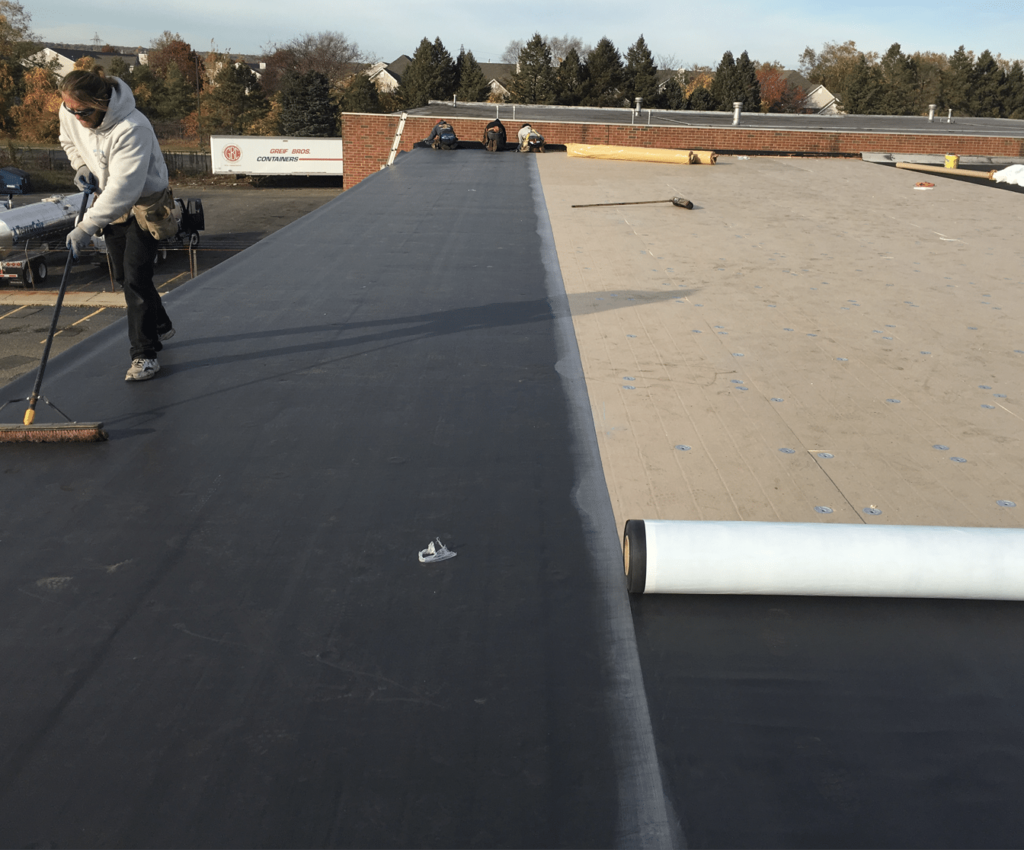Choosing the right roofing material for your home is a significant decision, one that can impact your property’s longevity, energy efficiency, and overall aesthetics. EPDM (Ethylene Propylene Diene Terpolymer) roofing is a popular choice, but how does it compare to other roofing materials? In this blog, we’ll explore the advantages and disadvantages of EPDM roofing in comparison to various roofing materials, helping you make an informed choice for your next roofing project.
EPDM Roofing
EPDM roofing is a synthetic rubber membrane known for its durability and cost-effectiveness. It is commonly used in low-slope or flat roof applications. Here are some of its key characteristics:
- Durability: EPDM roofs can last 20 to 30 years or even longer with proper maintenance. They are resistant to UV rays and harsh weather conditions.
- Low Maintenance: EPDM roofing requires minimal maintenance, making it a convenient choice for homeowners.
- Cost-effective: The upfront cost of EPDM roofing is relatively low, making it an attractive option for budget-conscious homeowners.
- Energy Efficiency: EPDM roofing can help improve energy efficiency by reflecting heat and reducing cooling costs.
- Easy Installation: Professional installation is recommended, but EPDM roofs are relatively easy to install.
Asphalt Shingles
Asphalt shingles are one of the most common roofing materials in North America. They have their advantages and disadvantages:
- Affordability: Asphalt shingles are often the least expensive roofing option upfront.
- Variety: They come in a wide range of colors and styles, allowing for customization.
- Easy Repairs: Damaged shingles can be easily replaced, reducing maintenance costs.
- Limited Lifespan: Asphalt shingles typically have a lifespan of 15 to 30 years, which is shorter than some other materials.
- Susceptibility to Weather: They can be prone to damage from extreme weather conditions, such as hail and high winds.
Metal Roofing
Metal roofing is gaining popularity for its durability and energy efficiency.
- Longevity: Metal roofs can last 50 years or more with minimal maintenance.
- Energy Efficiency: They reflect heat, reducing cooling costs in hot climates.
- Resistant to Weather: Metal roofs are highly resistant to fire, wind, and hail.
- Higher Upfront Cost: Metal roofing tends to have a higher initial cost compared to some other materials.
- Noise: Rain and hail can be louder on a metal roof, which may be a consideration in some areas.
Wood Shingles or Shakes
Wood shingles and shakes offer a unique, natural look.
- Aesthetic Appeal: They add rustic charm and curb appeal to a home.
- Insulation: Wood provides natural insulation, helping regulate indoor temperatures.
- Shorter Lifespan: Wood roofing typically lasts 20 to 30 years, which is shorter than some other materials.
- Maintenance: Regular maintenance is required to prevent rot, moss, and insect damage.
- Fire Risk: Wood roofs can be a fire hazard in dry climates and may require treatment.
Slate Roofing
Slate roofing is known for its elegance and longevity.
- Elegance: Slate roofs are highly regarded for their beauty and architectural appeal.
- Durability: They can last 100 years or more, making them a long-term investment.
- Heavyweight: Slate is heavy, and the roof structure may require reinforcement.
- Cost: Slate roofing is one of the most expensive options, both in materials and installation.
- Professional Installation: Installing slate requires skilled professionals due to its complexity.
Choosing the Right Roofing Material for Your Home
The choice of roofing material depends on various factors, including your budget, climate, aesthetic preferences, and long-term goals. Here are some considerations to help you make an informed decision:
- Budget: Determine how much you’re willing to invest in your roofing project. Keep in mind that while some materials have a higher upfront cost, they may require less maintenance and have a longer lifespan.
- Climate: Consider your local climate and the specific weather conditions your roof will face. Certain materials, like metal and slate, are more durable in extreme conditions.
- Aesthetic Preferences: Your roofing choice should complement your home’s architectural style and your personal taste.
- Long-Term Goals: Are you planning to stay in your home for many years, or is this a short-term investment? Longer-lasting materials may be a better choice for those who plan to stay.
- Maintenance: Think about how much time and effort you’re willing to invest in roof maintenance. Some materials require more upkeep than others.
- Environmental Impact: If sustainability is a concern, research roofing materials that are eco-friendly and energy-efficient.
Conclusion
Choosing the right roofing material for your home is a significant decision that requires careful consideration. EPDM roofing is a durable and cost-effective option, but it’s essential to weigh its pros and cons against other materials like asphalt shingles, metal roofing, wood shingles, and slate. Each roofing material has its advantages and disadvantages, and the choice ultimately depends on your specific needs and priorities. Consulting with a professional roofing contractor can also provide valuable insights to help you make the best decision for your home. Remember that investing in the right roofing material now can provide long-lasting protection and add value to your property for years to come.
Bryton Roofs https://brytonroofs.com/

